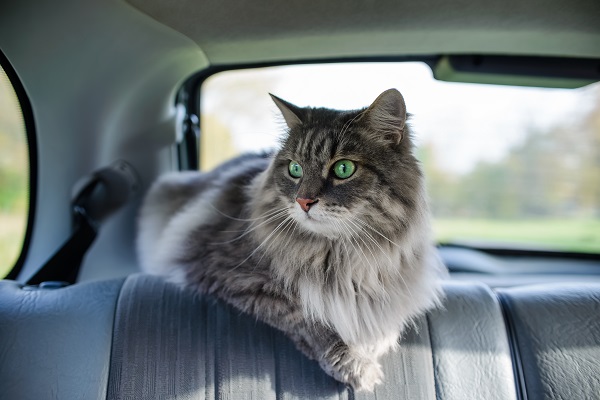Traveling for fun or exploring places is a habit many people find hard to desist. Travel-loving families like to pack their bags and prepare to embark on a trip on any pretext. Having gone through the chores of finalizing locations, drawing up the itinerary, giving the final touches to the travel plan, and fixing hotels or homestays, pet owners have just one more thing to settle.
But the question that gets stuck is what to do with their cat. Many families can’t even imagine leaving behind their beloved pets when traveling because the feline is a family member. So, leaving behind the cat to a sitter or paying for daycare is not an option for the family. Taking the cat along with them is the only option left, and much more feasible, but with some careful planning.
Keeping your cat safe and happy during the travel should be the uppermost concern as you continue to express your care and love for the petite feline. Whether traveling by road or air, transportation safety is of utmost importance. Moreover, preparing the cat for travel a few days before the trip is essential to prevent the animal from getting nervous and darting hither and thither dangerously.
Here are some verified tips from vets for ensuring safe travel for cats. The tips include the various stages of travel, including preparing the cat for travel, taking the ride, reaching the destination, and returning home.
Preparing the cat for travel
Since traveling with your pet has always been on your list, you should familiarize them with a pet carrier right from when they are kittens. Familiarity makes cats most comfortable, and they need time to adjust to unfamiliar things and situations.
Keep the carrier in a room or place where the cat spends most of the time so that it explores the carrier out of curiosity and, in the process, becomes familiar with it within a few days.
Even if it doesn’t sit inside the carrier for long, it would be a known territory without surprises. Make the carrier attractive for your cat by placing familiar bedding, toys, and treats inside.
Be patient and give your cat the time it needs to be comfortable living inside the carrier.
Luring an unwilling cat into the carrier
Place the carrier in a room without any hiding places so that it becomes the only retreat for the cat. Never forcefully drive the cat inside the carrier. But be patient and calm while gradually coaxing and luring it to enter the carrier. Trying too hard might frighten the cat and repulse it from the carrier.
While front-opening carriers allow cats to walk willingly inside, it might only sometimes happen that way. If your cat does not show interest in stepping into the carrier, you must arrange for a top-open carrier; to cradle the cat and lower it gently inside.
If the carrier opens in the front only, then turning it on the side would convert it into a top open carrier. However, lower the cat’s rear legs to place it comfortably inside. Another option is to remove the top half of the carrier to put the cat at the bottom and then replace the top.
Make the cat feel safe and secure
Cats have an innate habit of marking their safe territories by secreting a feline facial hormone. Recreate a similar feeling in your cat using Feliway, a synthetic version of the hormone.
Feliway has proven helpful in relieving stress in cats induced by environmental challenges that affect their behavior. Spray Feliway inside the carrier about half an hour before travel to reassure and comfort cats as they feel safe to cope with the environment inside the carrier, which is unfamiliar to them.
Encourage travel practice for the cat
Take some time to make your cat travel-ready by taking it on short rides in the carrier when visiting the post office, banks, etc., and even during your social visits. However, never use the carrier when taking your cat to the vet’s office.
Ensure that the cat travels empty stomach to avoid car sickness, and it will make the animal responsive to treats offered in the office.
After the trip, reward your cat, encouraging it to look forward to the next trip.
Read Also: Tips for Cats Who Are Scared of Dogs
Before opening the car door, check if the cat feels secure
Despite being familiar with the carrier, some cats might be skittish sometimes as they cannot cope with travel stress, especially for long distances. Before traveling, check with your vet about the kind of anxiety medication that suits your pet. Since anxiety medications do not suit all cats, it is always better to know the right one for your cat to help it feel secure and safe during the trip.
Carry your cat’s usual litter box
After travel, your beloved furry pet will need some resting place to relax and refresh. You must arrange for a restroom for your cat, and the best and easiest way to ensure it is to carry the litter box the cat usually uses. The cat would feel much at home when finding the usual place to relieve itself.
Stay calm during travel because your cat can sense your stress level, and displaying any signs of stress might panic the cat.

 DogExpress
DogExpress


















 in Chandigarh, India.
in Chandigarh, India. 
